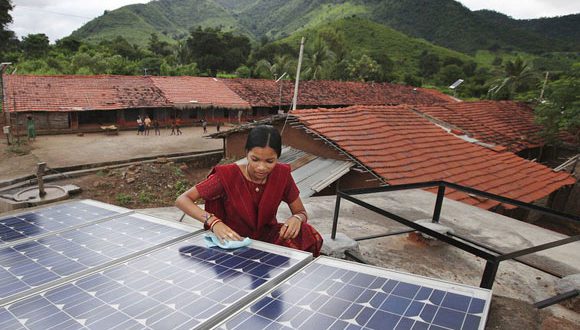Nowadays, people will hear about how communities can save on not only energy, but also on costs which help pay for it. However, as more and more communities are considering their options when it comes to energy, not everyone can reap the rewards that stem from cheaper energy.
With new policies and programs concerning cheaper energy, solar power comes to mind. However, like any other source of energy, solar power has a price tag. So, why not spread its benefits to people with lower incomes?
In this article, the main focus will be on solar power, and how it should be incorporated in low-income households. As such, we will introduce the 6 effective ways that solar power can be brought to said households.
- Ensure Solar Power In Housing And Anti-Poverty Programs
“Since many federal and state programs are looking to reduce poverty and promote economic development in as many ways as possible, then one must look to two different solar-power initiatives,” says RJ Byrum, a business writer at 1 Day 2 write and Write my X. “Low Income Home Energy Assistance Program (LIHEAP) and the Weatherization Assistance Program (WAP) are energy assistance programs that help families and household get cheaper energy like solar power. With more opportunities growing for those looking to save on housing and energy usage, these initiatives will soon see utilities bills dipping.”
- Encourage State Energy Policies For Low-Income Housing
Some states have already adapted the following policies and initiatives to encourage renewable energy:
- State renewable portfolio standards (RPSs)
- Financial incentives
- Community solar and net metering policies
As such, these can all be adapted to support solar energy for low-income housing.
- Have A Financial Strategy
Many financial strategies can be used to help people – especially low-income individuals – get access to solar energy. Although this may require enabling legislation or new regulations, and also involve working with utilities, solar developers, county agencies and/or financial institutions, this all goes to show that there are many options to consider to make solar energy access a reality. Along with legal and regulatory complexity, as well as potential range of stakeholders, it’s important to establish a lead agency with specialized skills in project finance. And, with many existing financing vehicles to consider, the expertise and leadership of an agency that care about clean energy financing is as good as having a substantial endowment.
- Trusted Low-Income Allies
With an innovative idea such as solar energy in low-income housing, you may want to consider better allies than (in most cases) government officials and program managers to promote such programs. With that in mind, you may want to partner with people who share the same interests and concerns as yours. These can be:
- Early stakeholders
- Trusted organizations with established initiatives
- Low-income outreach and advocacy groups
- Community action agencies
- Other service institutions
These trusted allies can help ensure greater buy in and program enrollment, along with the needed reinforcement of mutual trust, and improve outreach and marketing.
- Volunteering
“The prospect of adapting solar power is already a reality in some states,” says Alisha Tucker, a project manager at Brit student and PhD Kingdom. “In fact, solar power is already appealing to the public, since it aims to help solve social and environmental problems. Therefore, it makes sense for allies and initiatives to offer volunteering opportunities to help spread the message. With groups like Habitat for Humanity and Grid Alternatives have already found success with this approach, since they not only help lower the cost of public housing, but they also help encourage newer and more effective public policies that benefit low-income families and individuals when it comes to where they live.”
- Ensure Benefits For Low-Income Consumers
Like any other consumer, low-income individual will (and should) benefit from the things that solar power has to offer. By implementing low-income solar programs into existing programs, they will provide real financial benefits for the low-income customers that they serve.
Conclusion
The solar industry is, in no doubt, growing. Therefore, it’s now more important than ever for everyone can have access of this energy, regardless of income. So, if someone lives on low income, then they should be able to reap the rewards of solar energy, right? With policy and program innovation leading the charge, solar energy will soon be used by every household looking to not only use clean energy, but also save on their next energy bill for years to come.
 Michael Dehoyos is a writer and editor at Buy Coursework and Academic Brits. He is also a contributing writer for numerous publications like Origin Writings. As a web developer, he helps companies improve their websites when it comes to marketing and UX design.
Michael Dehoyos is a writer and editor at Buy Coursework and Academic Brits. He is also a contributing writer for numerous publications like Origin Writings. As a web developer, he helps companies improve their websites when it comes to marketing and UX design.
 Alternative Energy HQ solar power for homes, wind energy, and bio fuel issues
Alternative Energy HQ solar power for homes, wind energy, and bio fuel issues






